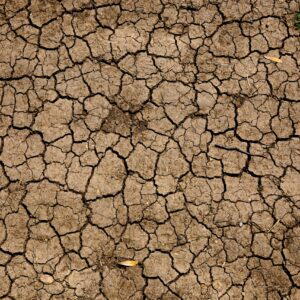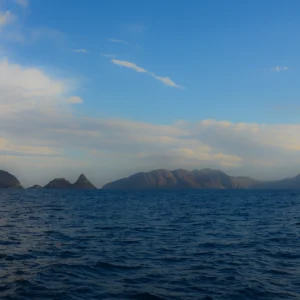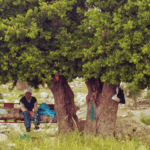Hidden between the vast olive fields on the outskirts of Moknine, Neji points towards the abandoned well that once watered his family’s fruit farm.
My grandfather dug this well, and it used to be enough for all the trees in here. Now, I have to get water delivered almost every week.
For generations, the well had delivered fresh groundwater. Then, almost without warning, the water turned too salty for agriculture. Neji’s story is not unusual. From Nabeul to Gabès, rising groundwater salinity is making traditional wells unusable. Like many small-scale farmers across Tunisia, he’s now forced to buy water by truck. It’s expensive, and every season costs more than the last.
The causes are well known: decades of over-pumping have led to seawater intrusion into coastal and inland aquifers. However, the solutions remain slow and out of reach. National strategies focus on large water treatment projects, requiring years of planning and millions in funding. But what if clean water could come from a small, solar-powered desalination system, installed directly on the farm?
Inspired by this question, we reached out to Dr. Wei He, a UK-based senior researcher and a previous research fellow at MIT. He’s among the leading experts on decentralized desalination and has spent the past several years developing affordable solutions for desalination that can work for farmers worldwide. Their results suggest that small-scale desalination is not only possible but increasingly practical and affordable.
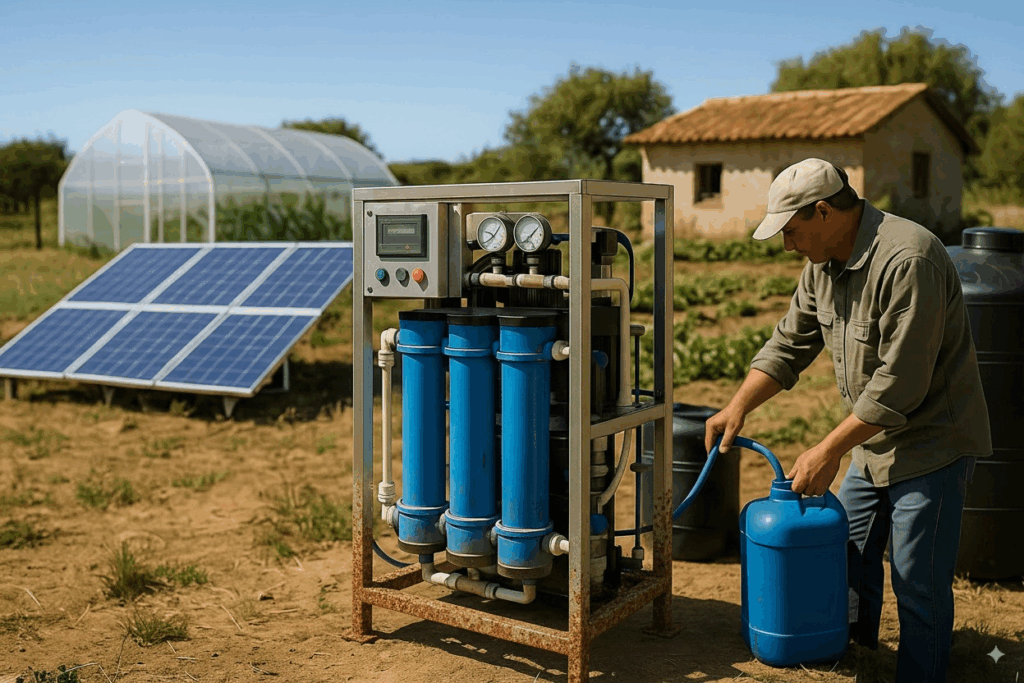
From Ships to Farmland: Why Small-Scale Desalination?
While much of the innovation in desalination has historically emerged from the Middle East, where abundant energy resources made large-scale plants feasible, the push toward small-scale, decentralized desalination has emerged out of necessity elsewhere.
The shipping industry was among the first to develop this technology as massive cruise ships needed to provide water for hundreds of people, but couldn’t practically carry enough water for long voyages. At the same time, small island communities, surrounded by water yet often without reliable access to drinking water, further pushed for solutions that could run on decentralized renewable energy.
These two very different settings converged on a shared problem: how to make desalination work at a smaller, more affordable scale. The answer emerged in solar desalination, which combines independence and affordability.
This approach is auspicious for countries like Tunisia, where wells that once provided safe irrigation and drinking water can no longer meet basic needs. According to recent assessments, 85% of Tunisia’s groundwater now exceeds the salinity threshold of 1.5 grams per liter, with many farmers reporting levels as high as 12 grams.
As coastal saltwater pushes inland, this crisis can reach agricultural regions we consider far from the coast, like Kairouan, where farmers are increasingly forced to rely on expensive water purchases for irrigation. For these communities, the decentralized desalination model offers a practical solution.
Tunisia’s high solar potential makes renewable-powered units a natural fit. Recognizing this opportunity, several Tunisian companies have started offering modular desalination solutions. Companies like Hydropro Water Solution and ThermEco are developing systems that can be tailored specifically for farmers, hotels, and even households. These local companies offer solutions that could help people and businesses secure their own water source without waiting for large government-led projects that may take years to materialize. However, despite these promising developments, significant challenges remain, particularly around optimizing systems for solar energy integration and managing long-term costs.
When Solar Meets Desalination
Solar desalination might sound straightforward: combine solar panels with a small reverse osmosis unit to enjoy affordable, sustainable access to water. But reality is more complicated because desalination and solar energy do not automatically give better results when combined. According to the International Renewable Energy Agency, the cost of solar energy dropped by 99.14% per watt between 1980 and 2023. Similarly, the cost of desalinated water fell by half between 1980 and 2005. Yet this doesn’t automatically translate to affordable water, as advances in solar and desalination technology don’t automatically translate to advances in solar-desalination systems.
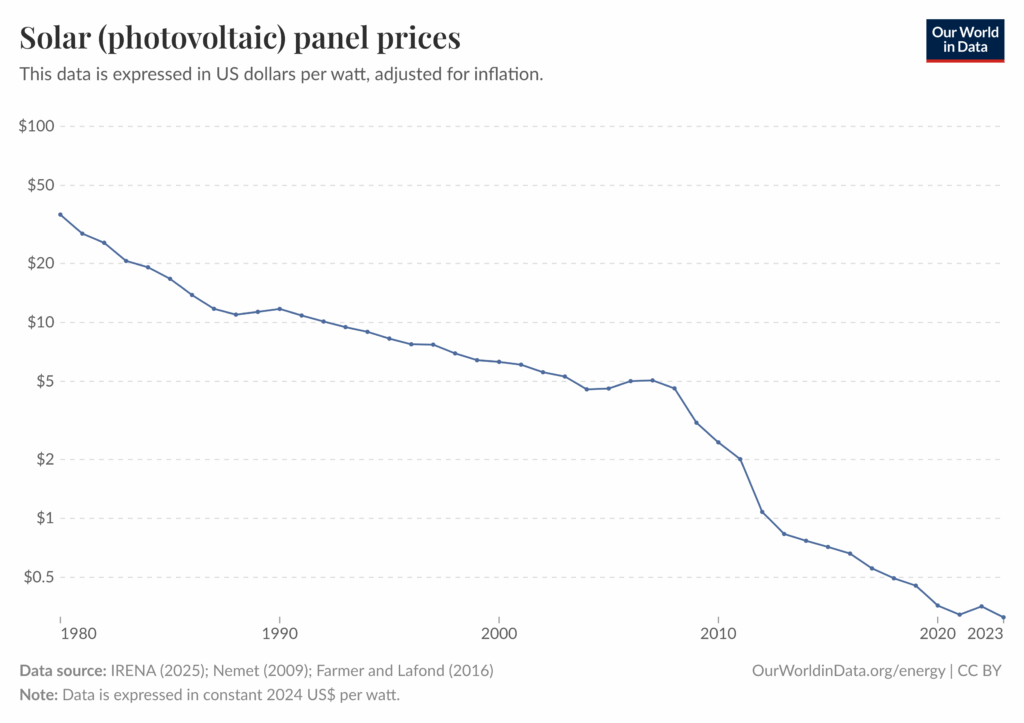
As Dr. He, senior Lecturer in the Department of Engineering at King’s College London, explained, progress in desalination and solar technology has often developed separately. The best available desalination technology, RO, is built for a steady electricity supply, such as diesel generators, while solar electricity fluctuates throughout the day.
Traditionally, the fix has been batteries and inverters that store energy and stabilize output. But batteries are expensive, making them the single biggest barrier to affordable small-scale desalination. Even as battery costs have fallen by more than 90% over the past 15 years, they still determine whether a system remains within a farmer’s reach or becomes economically unfeasible. This cost challenge is particularly significant in Tunisia, where agricultural margins are already thin and access to water directly impacts livelihoods.
Rather than using RO, Dr. He’s team developed a solar-powered electrodialysis (ED) system that operates without energy storage. Instead of seeking to stabilize the energy supply, the ED system adapts in real-time to electricity input. When it’s bright, it produces more; under clouds, it produces less, without damaging the equipment. This innovation makes it both efficient and cost-effective, overcoming one of the biggest obstacles that has kept desalination out of reach.
Can We Make Small-Scale Water Solutions Work?
When asked whether their system could work for a small farmer like Neji in Tunisia, Dr. He was realistic but optimistic.
For a vegetable farmer in Tunisia or a household with a large garden, the cost would probably be close to the price of a car: between €10,000 and €15,000 (or 34,000 to 51,000 Tunisian Dinars). Under good conditions, it could last for 15 years.
These figures may seem high, but when compared against long-term costs of unreliable water networks, truck water deliveries, or drought-induced crop losses, the economic equation shifts. In tests on high-salinity wells in New Mexico, in the United States, the system achieved 94% energy efficiency and produced up to 5,000 liters of clean water per day. He also noted that the design is modular and viable at small to medium scales, capable of delivering 2 to 100 cubic meters of water per day. Their findings make desalination technology available for coastal and non-coastal areas without the need for centralized systems.
Dr. He further emphasized that their work is driven by a fundamental goal: providing affordable and reliable water solutions for farmers everywhere, making all system designs available in published papers.
Salty Water, Salty Questions
The desalination debate should not be reduced to big versus small. A resilient water future will require both. Large coastal plants will remain indispensable for cities, while off-grid units could be transformative in rural and remote areas.
Yet technical innovation alone will not solve Tunisia’s water crisis. Policy oversight and financial support remain critical. Previous government programs promoting solar water pumping, while well-intentioned, fueled the proliferation of illegal wells. Estimated at over 20,000 wells across vulnerable ecosystems, these solar-powered wells are accelerating aquifer depletion and seawater intrusion. Without coordinated governance, even renewable-powered solutions can deepen existing problems.
Significant effort is needed to accompany farmers, not only with access to technology but also with clear regulation, financing, and training, to ensure that small-scale desalination becomes part of an environmental solution rather than another layer of unsustainable exploitation.
Desalination never comes without trade-offs. Leftover concentrated saltwater remains one of the most critical problems. If mismanaged, it can harm ecosystems and damage soil. When asked about this problem, Dr. He explained that decentralized desalination will only be sustainable if it is embedded in broader water management systems that protect local environments from both traditional and non-traditional desalination methods. He further speculated that in some cases, Tunisia’s characteristic natural salt lakes could serve as disposal sites, but this requires careful ecological study.
The takeaway is clear: small-scale desalination is no longer a dream. However, the real work lies not only in advancing technology but also in rethinking governance, financing models, and community training to ensure these systems are maintained and managed effectively. With the right policies, it could bring life-changing water security to farmers, households, and even alternative tourism ventures such as remote eco-lodges and desert cabins.
Copyright © 2025 Blue Tunisia. All rights reserved


